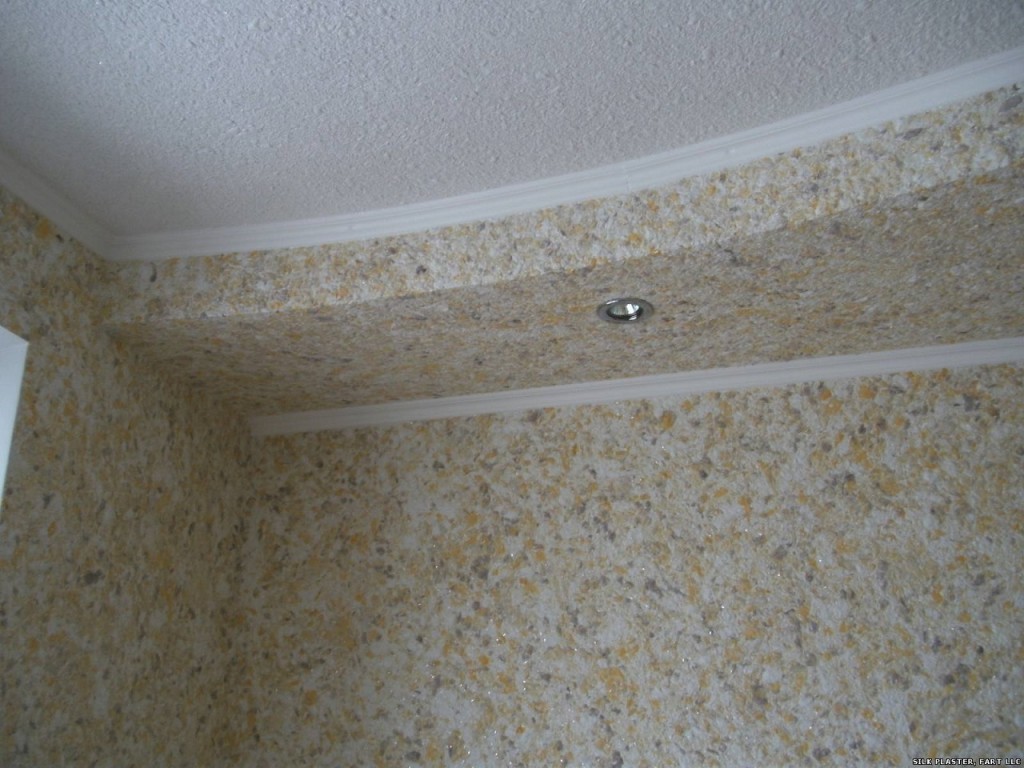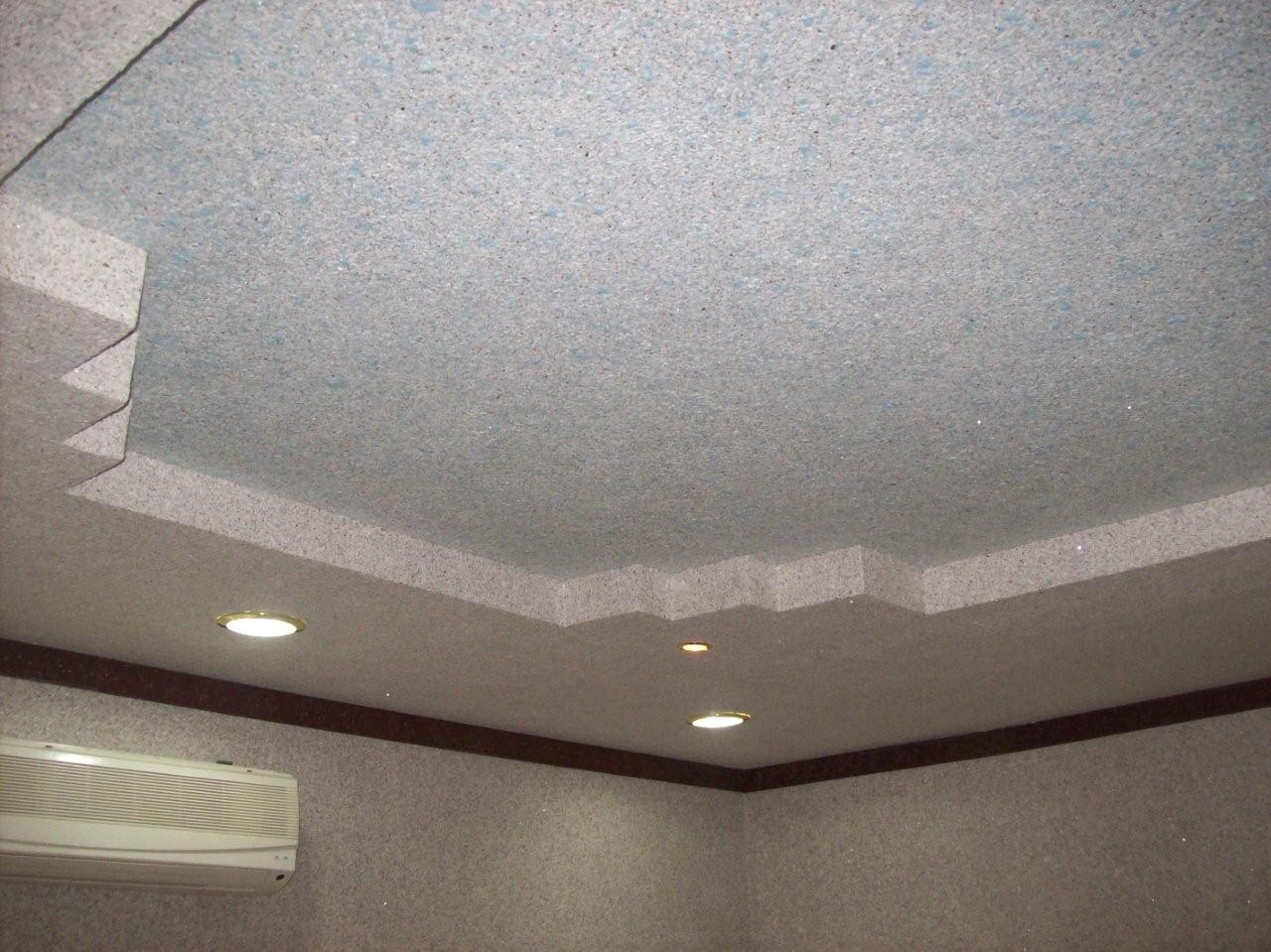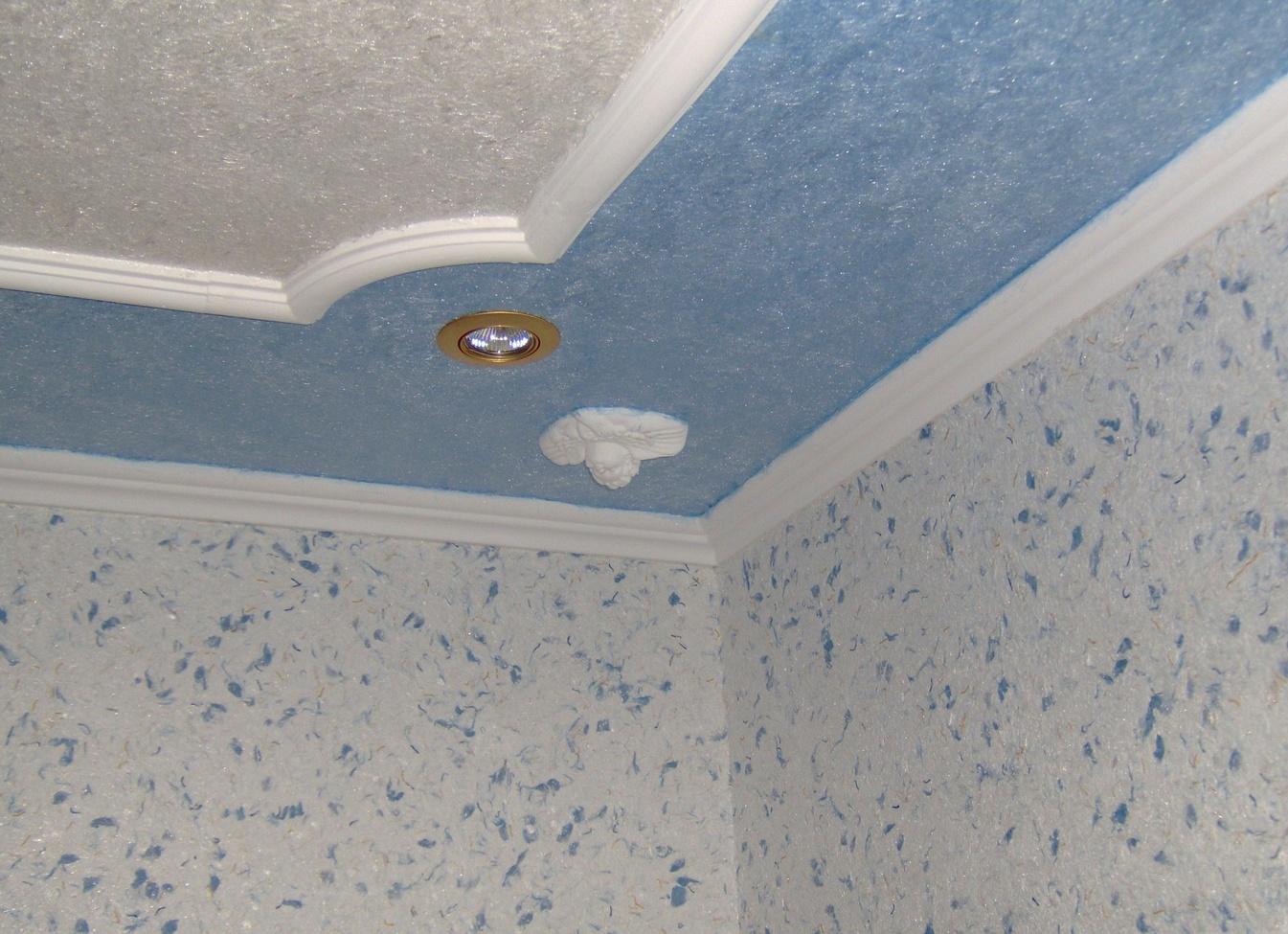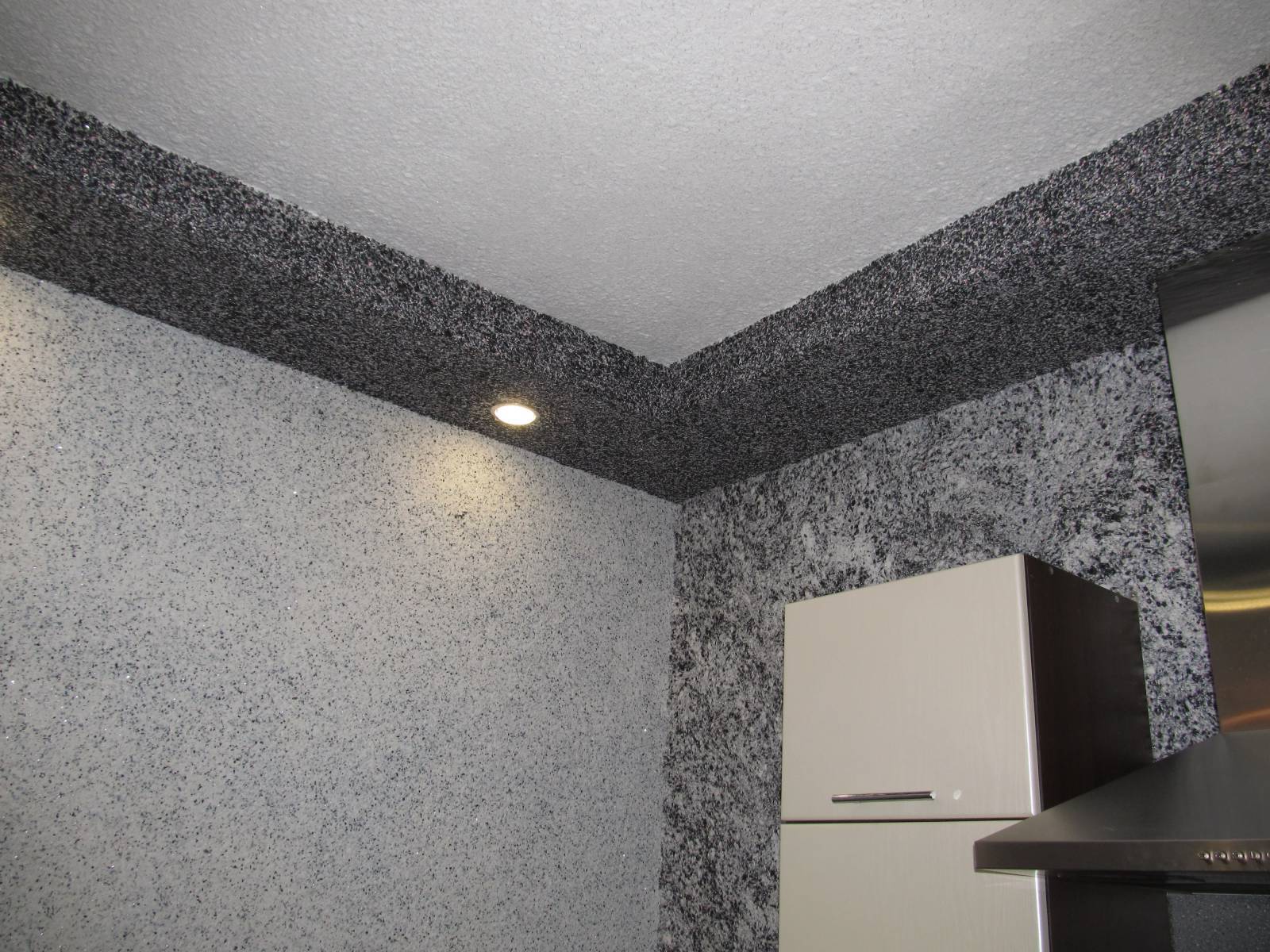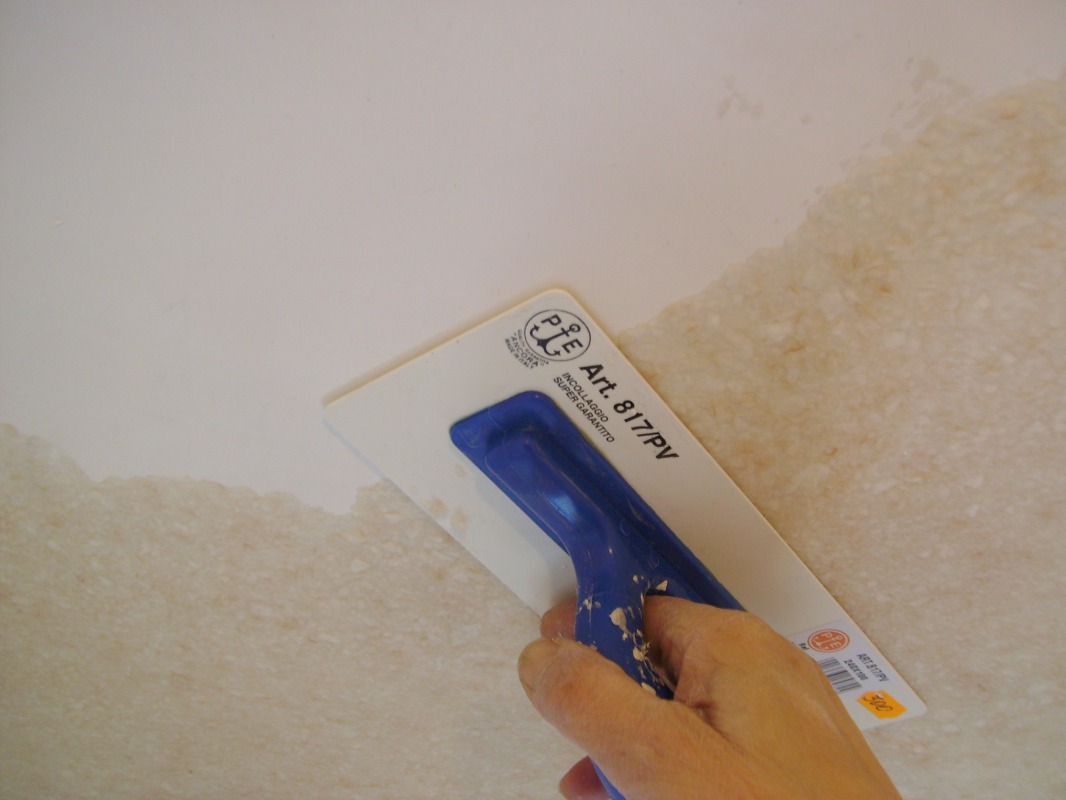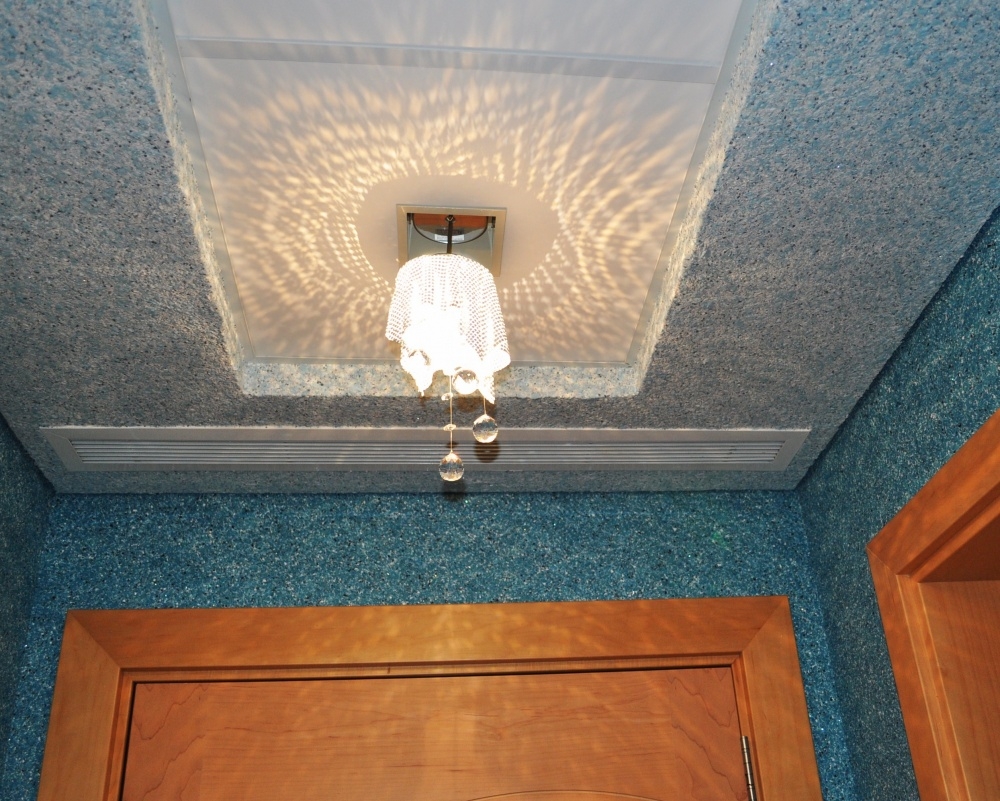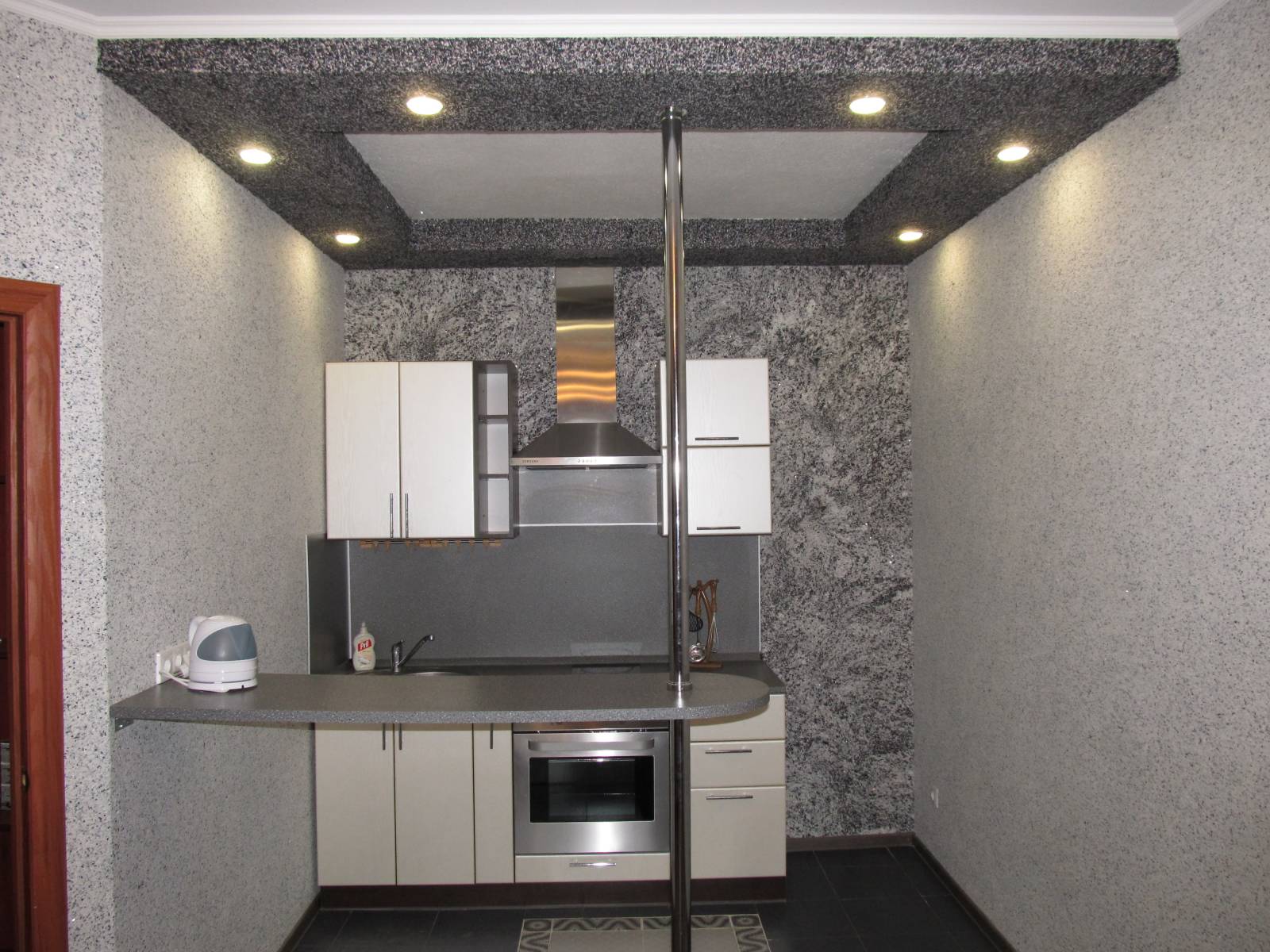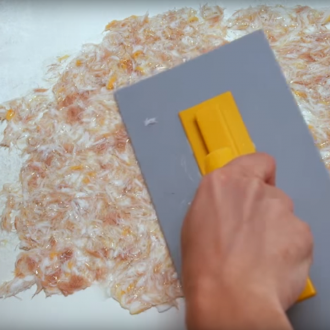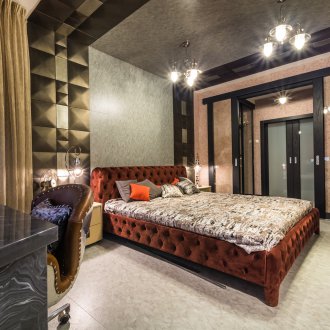How to apply liquid wallpaper on the ceiling: tips from professionals
Content
Increasingly, people choose liquid wallpaper for interior decoration. This finishing material is deservedly becoming popular. In fact, this is a kind of plaster, but it only consists not of sand, lime and cement, but of cellulose or silk fibers. Universal composition suitable for walls and ceilings. It is sold in the form of a dry mixture, which must be diluted with water before use.
Especially liquid wallpaper will appeal to those who with a shudder recalls how long during the repair they had to measure out the necessary pieces of roll wallpaper, and then pick up patterns even longer and fight with bubbles. It was also unpleasant to follow the joints, and the wallpaper, as luck would have it, was constantly stuck at the seams, but now thanks to modern technology you can forget about all these torments. Believe me, repairs can be done quickly and efficiently.
The advantages of liquid wallpaper
Before buying this decorative coating, it’s worth it to familiarize yourself with its main advantages:
- Convenience of cooking. To prepare a liquid wallpaper for use, you do not need much time and place. Ordinary wallpapers need to be measured, cut, spread with glue, and this wall covering is enough to fill with water and wait a bit.
- Ease of use. You can apply liquid wallpaper to the ceiling in the same way as plaster. The finished composition resembles a cotton-like mixture. Distributing it over the ceiling with a spatula is much easier than gluing rolled wallpapers.
- Some people ask: is it possible to apply liquid wallpaper on an uneven ceiling? The answer is yes. This finishing material is strong enough to hide minor defects in the ceiling surface. If there are no large cracks, then without a putty layer, you can make a smooth ceiling.
- Seamlessness. Liquid wallpaper on the ceiling forms an absolutely flat surface, whereas after gluing ordinary rolls, joints are visible.
- Finishing the ceiling with liquid wallpaper can be done on top of the old coating (if it was oil or water based paint). Other types of ceiling decor will have to be removed.
Designing with such wallpaper is a reasonable solution for rooms of an unusual shape, with many corners, ledges or other curly irregularities. Also, this finishing option is suitable for rooms with rounded walls. - Liquid wallpaper on the ceiling is a good choice for a home where allergy sufferers live. The composition of this environmentally friendly material mainly includes natural cotton fibers. Due to the antistatic components in the composition, almost no dust settles on the ceiling surface.
- Easy interchangeability. If you see that a damaged area has appeared on the ceiling, do not be upset. This can be quickly fixed by replacing only a damaged piece. To do this, the defect is moistened with water, after which part of the liquid wallpaper is removed. A fresh mixture is applied to the freed area.
- Suitable for reusable use. This kind of wallpaper can be transferred to another room. To do this, they must be moistened and carefully removed. After that, soak in warm water and apply to a new surface. It can be used not immediately, but stored in a dry form for several months.
- The ability to combine different colors.Of course, you can limit yourself to a white coating, but if you want to experiment and create an extraordinary design, then liquid wallpaper will come in handy. The white ceiling can be brightened at any time. To do this, add color pigment during preparation or paint after drying. You can also decorate the ceiling with various patterns and patterns.
You have already learned what attracts buyers liquid wallpaper. It's time to talk about the shortcomings.
Cons of liquid wallpaper
We figured out the pros, go to the study of cons:
- Although in recent years the price has become noticeably lower, but still when compared with ordinary paper wallpaper, the cost of liquid wallpaper is quite high. However, such a coating lasts 7-10 years.
- Less variety of colors and textures than traditional wallpaper. This shortcoming is easy to correct if you want to show imagination. As we have already said, liquid wallpaper allows you to realize extraordinary design solutions.
- Liquid wallpaper on the ceiling cannot be washed. If you have stained some area, you will have to cut it out and replace it, since water and detergent will destroy the structure of such a coating. Due to the lack of moisture resistance, this wallpaper is better not to use in the kitchen or in the bathroom. If, despite the recommendations, you are already tuned to apply liquid wallpaper on the ceiling of these rooms, then after drying, cover them with colorless varnish.
- Such a ceiling coating dries for a long time. Depending on the humidity and air temperature in the room, drying can last from two to four days. Unlike rolled wallpaper, liquid can be dried with heaters or drafts, without fear that they will fall off.
Having studied the advantages and disadvantages, you can decide for yourself whether it is worth giving preference to this finishing material.
Ceiling decoration with liquid wallpaper
If you decide to buy this decorative coating, you will probably want to learn how to glue liquid wallpaper. To properly stick liquid wallpaper on the ceiling with your own hands, you must first carefully prepare the surface.
Surface preparation
Liquid wallpaper is a material that is able to hide a lot of visual flaws. Surface irregularities can be removed by proper application. However, we advise you to first prepare the ceiling. This recommendation is due to the fact that there are lighting fixtures on the ceiling. Light from them will emphasize even the tiniest hollows or tubercles. To prevent this from happening, you need to level the surface well.
To do this, putty is first applied or suspended ceilings are formed. Then you need to block the pore primer. If the ceiling was previously painted bright, use a waterproof primer. It is advisable to apply it in 2 layers, each of which should dry for at least 3 hours. Also, to coat the color, you can use a white water-based paint.
If you want to make a drawing on the ceiling using liquid wallpaper, then after that you need to make markup. Design you choose yourself. We will only tell you that a wide strip around the perimeter of the ceiling is considered a popular option. To implement this idea, you need to draw a dividing line and mark the boundaries using masking tape.
For more complex shapes, you need to cut out paper patterns and fix them on the ceiling. First, with wallpaper, you fill the background space, then peel off the paper sheets and complete the creation of the original canvas. If you have a multi-level plasterboard suspended ceiling in your apartment, you can make interesting gradient transitions.
Cooking liquid wallpaper
The next step is to prepare the solution. This must be done according to the instructions from the manufacturer, which will be indicated on the package. Observe the exact proportions to get the right consistency. You will need a plastic container (it is convenient to use a basin) and warm water (approximately 25 ° C).Pour the contents of the package into the prepared vessel. Pour the required amount of water into the dry mixture in small portions. Gently mix the wallpaper with your hands until the consistency looks like sour cream.
After that, leave the mixture for the period indicated on the package (usually 20-30 minutes). During this time, wallpaper glue in the composition swells and binds to paper fibers. The finished solution is once again stirred, while it is necessary to remove the undissolved large particles. If decorative additives are included in the kit, they are poured either before application, or immediately into the water (follow the instructions).
Finishing material should not be back to back. Do not buy it strictly by quadrature. Consumption may not be exactly what the manufacturers claim. Even on a perfectly smooth surface, you will likely need more wallpaper. As some part will be damaged during application. What can we say about an uneven ceiling, where the thickness of the layer will constantly vary.
Wallpapering
Before starting the application process, you need to check the readiness of the solution. To do this, a small amount of wet mixture is applied to the ceiling surface. The composition should be easy to pester and not settle. If this is not the case, correct the mistakes made. A mixture that is too thick will not be able to spread normally over the ceiling. A few milliliters of water should be added to it. If the solution is too thin, the wallpaper will drain. You just have to wait until the excess moisture evaporates on its own. And only after that you can begin work.
It is convenient to apply liquid wallpaper on the ceiling with a metal or plastic wide grater. The solution must be evenly distributed over the ceiling, with a layer of 2-3 centimeters. This is best done in a circular motion. The fibers will be rotated in different directions, so the dried coating will look most attractive. A wide spatula will help to completely level the surface (they usually putty). Before ironing the ceiling covered with wallpaper, the spatula must be moistened in water.
Also, liquid wallpaper can be applied with a paint roller. To do this, the mixture is glued in portions to the ceiling, and then leveled with a wet roller. If as a result you want to see the textured surface, you need a relief roller, but you can process the surface only after 5-8 hours, when the wallpaper is a little dried up.
After finishing work, you need to check its quality. To do this, arm yourself with a lamp and highlight the areas filled with wallpaper at a slight angle. So you will see all the irregularities and can quickly eliminate the shortcomings. After that, it remains only to wait until the liquid wallpaper is dry. We already mentioned that this will take 2-4 days. You can calmly ventilate the room without fear of drafts and temperature changes. This decorative material sets well if temperatures exceed 10 ° C.
Take your time to get rid of the rest of the solution. Excesses may come in handy to cover up defects that may appear after drying or during use. Dry the liquid wallpaper so that it can be stored longer, put it in a plastic bag and put it away. If you need them, you can always wet the right amount to replace the damaged area. And you don’t have to run to the store and pick up a shade that matches the color of the party you used.
Liquid wallpaper is a modern technology that will help to quickly update the interior of your home. If you do not have time for repairs, but want changes in the situation, take a closer look at this type of finish.
